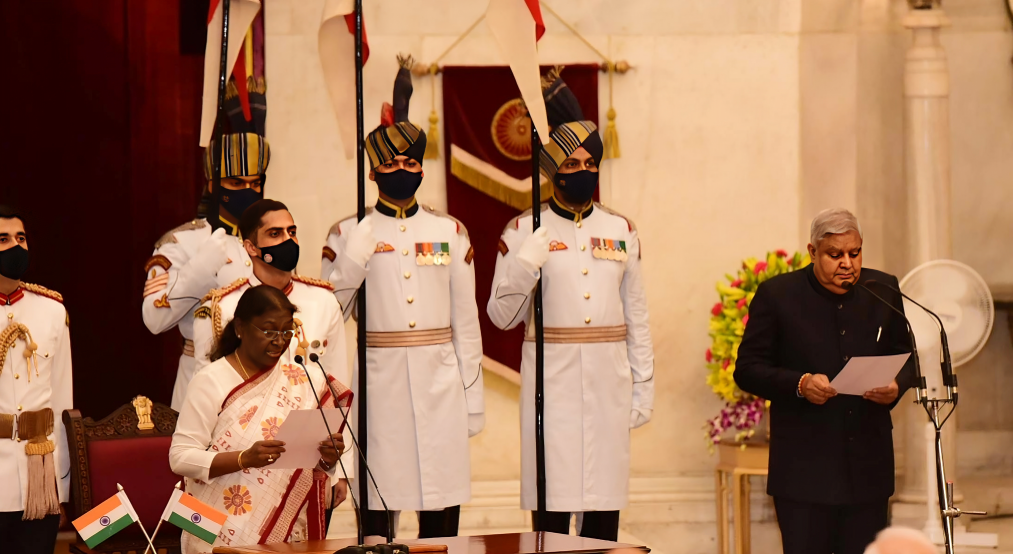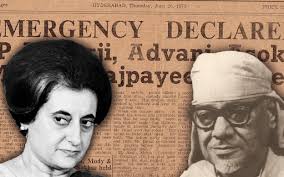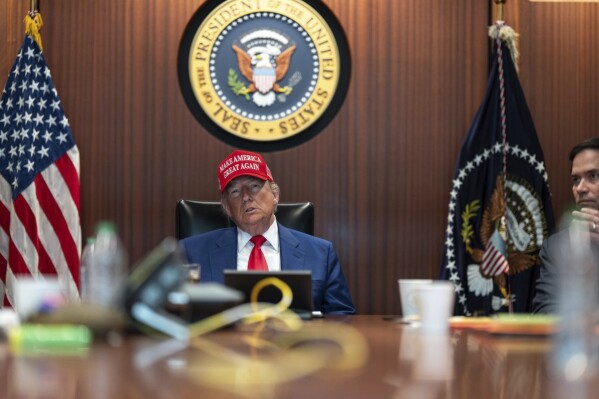
In this image provided by the White House, President Donald Trump and Secretary of State Marco Rubio, right, sit in the Situation Room, Saturday, June 21, 2025, at the White House in Washington. (The White House via AP)
The Middle East has long been a powder keg of geopolitical tensions, but few events have shaken the region like the U.S. airstrikes on Iran’s nuclear facilities on June 22, 2025. In a single, calculated move, the United States rewrote the rules of engagement in the Iran-Israel conflict, sending shockwaves across diplomatic circles and military command centers worldwide. This wasn’t just another skirmish—it was a deliberate, high-stakes strike aimed at crippling Iran’s nuclear ambitions before they could reach a point of no return.
The operation, authorized under President Donald Trump, targeted three of Iran’s most fortified nuclear sites: Fordow, Natanz, and Isfahan. Each of these facilities played a critical role in Iran’s uranium enrichment program, a program that the U.S. and its allies had spent years trying to contain through sanctions, cyberattacks, and covert operations. But when diplomacy failed, and intelligence suggested Iran was nearing a nuclear breakout, the White House made a decision that would either be remembered as a masterstroke or a catastrophic miscalculation.
The Anatomy of the Strike: Precision, Power, and Unprecedented Force
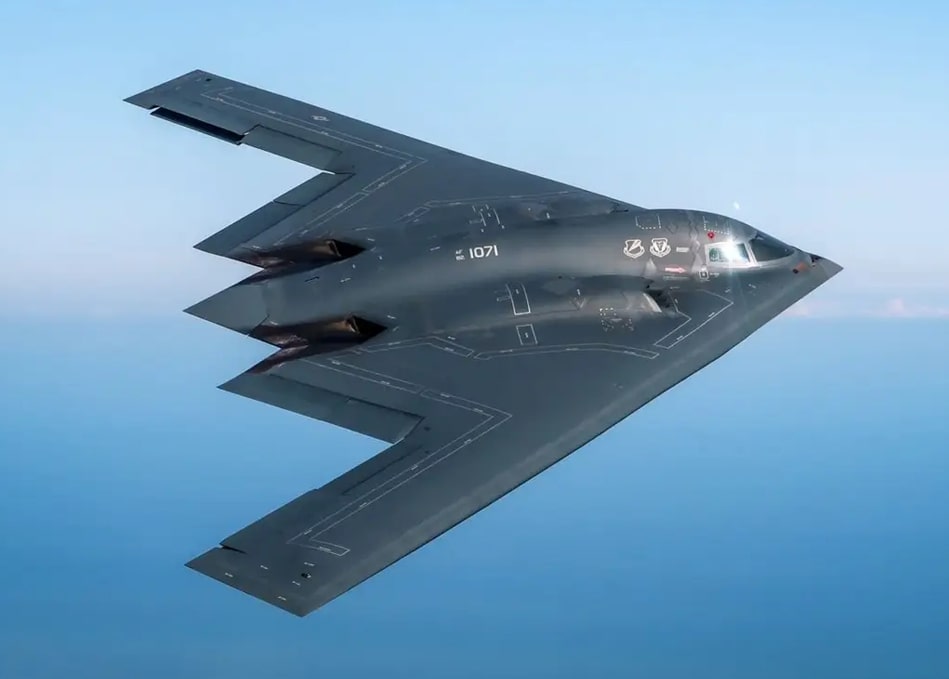
The Aircraft and Weapons That Changed the Game
The U.S. military didn’t just bomb Iran—it did so with a level of precision and firepower rarely seen in modern warfare. At the heart of the operation were six B-2 Spirit stealth bombers, deployed from Whiteman Air Force Base in Missouri. These aircraft, designed to evade radar detection, flew undetected into Iranian airspace, delivering a payload that would leave Iran’s nuclear infrastructure in ruins.
But the real game-changer was the weaponry. For the first time in combat history, the U.S. unleashed the GBU-57A/B Massive Ordnance Penetrator (MOP)—a 30,000-pound bunker-buster bomb capable of obliterating targets buried deep underground. Fordow, Iran’s most heavily fortified enrichment site, was built 80-90 meters beneath a mountain to withstand conventional attacks. The MOPs were specifically designed to punch through layers of rock and reinforced concrete, ensuring that even Iran’s most secure facilities weren’t safe.
Complementing the B-2 strikes were 30 Tomahawk cruise missiles, launched from U.S. Navy submarines positioned in the Persian Gulf. These missiles struck Natanz and Isfahan, where centrifuges and uranium conversion facilities were reduced to rubble. The sheer scale of the operation sent an unmistakable message: the U.S. was willing to go further than ever before to prevent a nuclear Iran.
The Targets: Why Fordow, Natanz, and Isfahan?
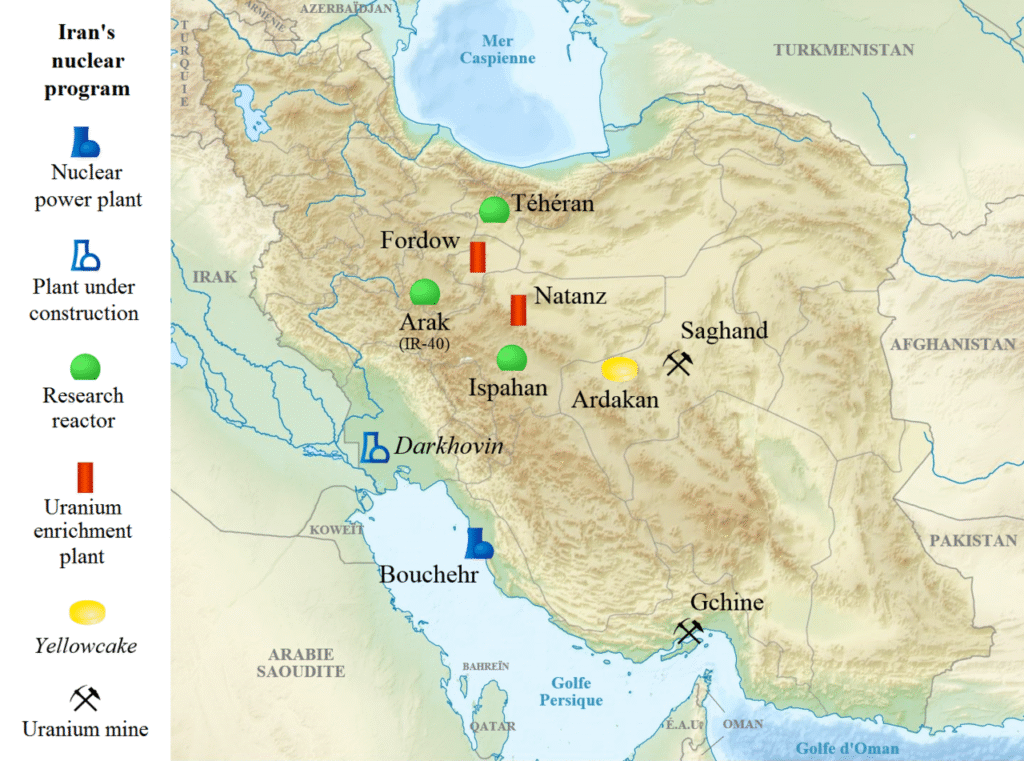
1. Fordow – The Crown Jewel of Iran’s Nuclear Program :- Hidden beneath a mountain near Qom, Fordow was Iran’s most secretive and secure enrichment facility. Intelligence estimates suggested it housed over 3,000 centrifuges, spinning uranium to weapons-grade levels. The facility was so well-protected that previous sabotage attempts—including the infamous Stuxnet cyberattack—had only slowed, not stopped, its operations. The U.S. strike aimed to do what no other attack had achieved: render Fordow unusable.
2. Natanz – Iran’s Largest Enrichment Complex :- Natanz was no stranger to attacks. Over the years, it had survived explosions, cyberattacks, and even assassinations of key scientists. Yet, it remained the backbone of Iran’s uranium enrichment efforts. The U.S. strike targeted its underground halls, where thousands of centrifuges operated around the clock. Satellite imagery later confirmed near-total destruction of critical infrastructure.
3. Isfahan – The Uranium Conversion Hub :- While Fordow and Natanz handled enrichment, Isfahan was where raw uranium was converted into gas for centrifuges. Destroying this facility meant Iran would struggle to replenish its stockpile, buying the West crucial time.
Despite the ferocity of the attack, no major radiation leaks were detected. The International Atomic Energy Agency (IAEA) confirmed that off-site radiation levels remained stable, a testament to the precision of the strikes
.
Global Reactions: A Divided World Picks Sides.
Russia and China – Furious Condemnation
Russia wasted no time in denouncing the attack. Deputy Foreign Minister Sergei Ryabkov called it a radical destabilization of the region, warning of unintended consequences. State media hinted at possible retaliation, though stopping short of direct threats.
China, meanwhile, framed the strikes as a “dangerous turning point” in global security. State-run outlets accused the U.S. of unilateral aggression, warning that such actions could trigger a wider conflict. Behind the scenes, analysts speculated whether Beijing would increase military support to Tehran, further complicating U.S. strategy in the region.
Middle East – Cautious Responses and Hidden Relief
Saudi Arabia, despite its public calls for restraint, privately viewed the strikes as a necessary evil. The kingdom had long feared a nuclear Iran, and while it couldn’t openly applaud the U.S., its muted response spoke volumes.
Qatar and Oman, however, were more vocal, warning of “disastrous repercussions” and urging diplomatic solutions. Iraq, caught between U.S. influence and Iranian-backed militias, condemned the attack outright, fearing it would escalate proxy wars on its soil.
Israel – The Silent Cheerleader
For Israel, the strikes were a long-awaited victory. Prime Minister Benjamin Netanyahu praised Trump’s “bold decision”, framing it as a historic move to prevent a second Holocaust. Behind closed doors, Israeli intelligence had reportedly provided key targeting data to the U.S., underscoring the deep coordination between the two allies.
Europe – Torn Between Support and Disapproval
France and Germany walked a tightrope. While acknowledging Iran’s nuclear threats, they emphasized the need for diplomacy. President Emmanuel Macron clarified that France had not participated in the strikes but hinted at supporting future operations if necessary.
The UK, under Prime Minister Keir Starmer, offered cautious support, stating that the U.S. had acted to “alleviate the nuclear threat”. Yet, even London urged a return to negotiations, fearing prolonged conflict.
India and Japan – The Neutral Pragmatists
India, balancing ties with both the U.S. and Iran, called for “dialogue and de-escalation”. Notably, it refused to endorse a Shanghai Cooperation Organisation (SCO) statement condemning Israel, signaling its independent stance.
Japan, reliant on Middle Eastern oil, convened an emergency meeting to assess fallout. PM Shigeru Ishiba stressed the need for a diplomatic resolution, reflecting Tokyo’s preference for stability over confrontation.
What Happens Next? The Domino Effect of a Single Strike
Iran’s Options: Retaliation or Retreat?
Iran’s leadership faces a dilemma. Direct military retaliation risks all-out war with the U.S., a fight Tehran cannot win. Instead, expect asymmetric warfare—more proxy attacks, cyber operations, and sabotage. The Houthis in Yemen, Hezbollah in Lebanon, and Shiite militias in Iraq will likely escalate strikes on U.S. and Israeli interests.
The Nuclear Deal – Officially Dead?
The 2015 JCPOA was already on life support. Now, it’s buried. No Iranian leader can return to negotiations after being bombed without appearing weak. Instead, Tehran may accelerate clandestine enrichment, making future diplomacy even harder.
A New Middle East Cold War
Saudi Arabia and Israel will push for harsher sanctions and more preemptive strikes. Russia and China may arm Iran with advanced missile defenses, turning the region into an even more volatile battleground.
Conclusion: A Strike That Changed Everything—But at What Cost?
The U.S. gambled big on June 22, 2025. It may have delayed Iran’s nuclear ambitions, but it also guaranteed years of shadow wars, economic turmoil, and a Middle East more unstable than ever. The world now watches, waiting to see if this move prevented a catastrophe—or ignited one.
Key Sources :
1. [U.S. Department of Defense – Strike Details](https://www.defense.gov)
2. [IAEA Reports on Iran’s Nuclear Facilities](https://www.iaea.org)
3. [Russian Foreign Ministry Statements](https://www.mid.ru)
4. [Chinese State Media Coverage](http://www.xinhuanet.com)
5. [Israeli PM Office – Official Response](https://www.gov.il)


